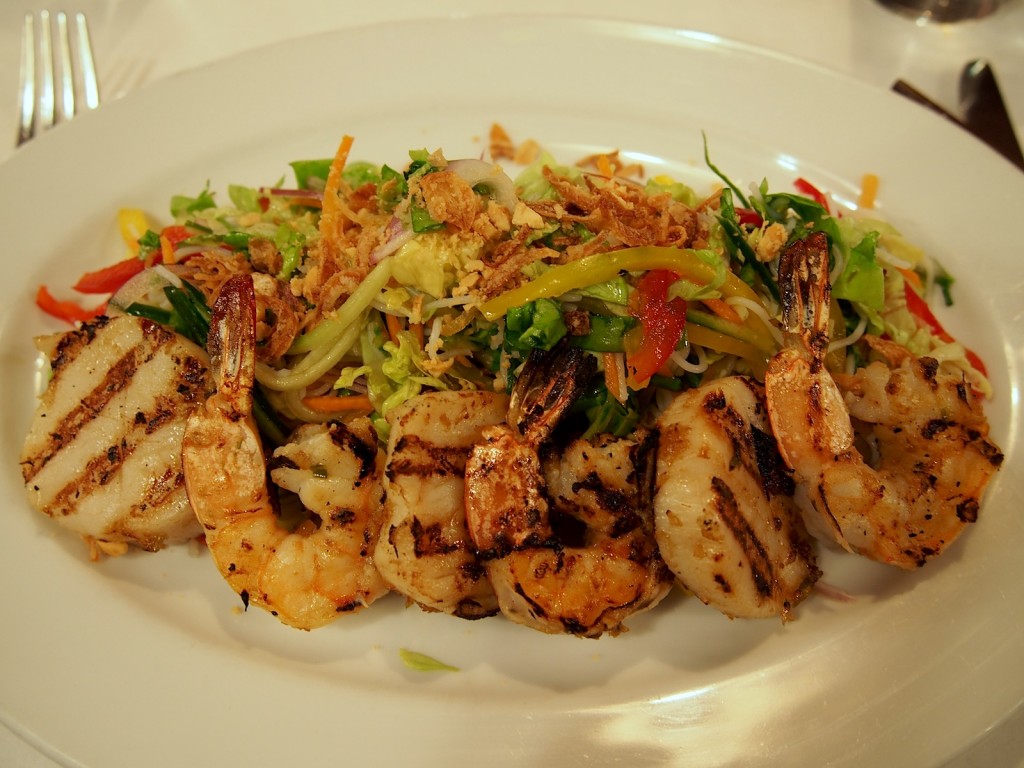I know that it might seem counterintuitive for me to ask this question, because this blog is largely focused on Riesling, but why are German dry whites from the Weissburgunder (aka Pinot Blanc / Pinot Bianco) and Grauburgunder grapes (aka Pinot Gris / Pinot Grigio) nearly invisible in New York Wine City (NYWC) restaurants?
I just had lunch at Le Coloniale on East 57th Street (between Lex and Third Ave) and this was my scallop and shrimp salad. I had a glass of semi-dry Riesling from Hermann J. Wiemer with it, and that was good (it would have been better if the bottle hadn’t been open for a couple of days already). However, a full-bodied dry Weissburgunder or medium-full dry Grauburgunder would have been sensational with this dish. OK, Le Coloniale is a French-Vietnamese restaurant and there aren’t so many of them in NYWC. On the other hand this combination of seafood and vegetables with a slightly spicy sauce is nothing unusual in the city’s restaurants, in fact it’s so common it’s almost standard.
Why am I going on about this? The German Wine Institute (DWI in Mainz on the Rhine) just released the vineyard stats for 2014 and they did something very interesting with them. Instead of just comparing 2014 with 2013, they also made a comparison with those for 2000 to reveal the long-term trends. During that time the vineyard area in Germany planted with Grauburgunder more than doubled (to 13,900 acres / 5,627 hectares) and that planted with Weissburgunder almost doubled (to 11,846 acres / 4,794 hectares)! Those are very substantial figures, making Germany the number two (only Italy has more vineyards planted with Pinot Grigio) and the number one producer of wines from these grapes in the world. Does anybody realize that yet?


![120114_riesling_global_RZ [1600x1200]](http://www.stuartpigott.de/wp-content/uploads/2015/03/120114_riesling_global_RZ-1600x12008.jpg)